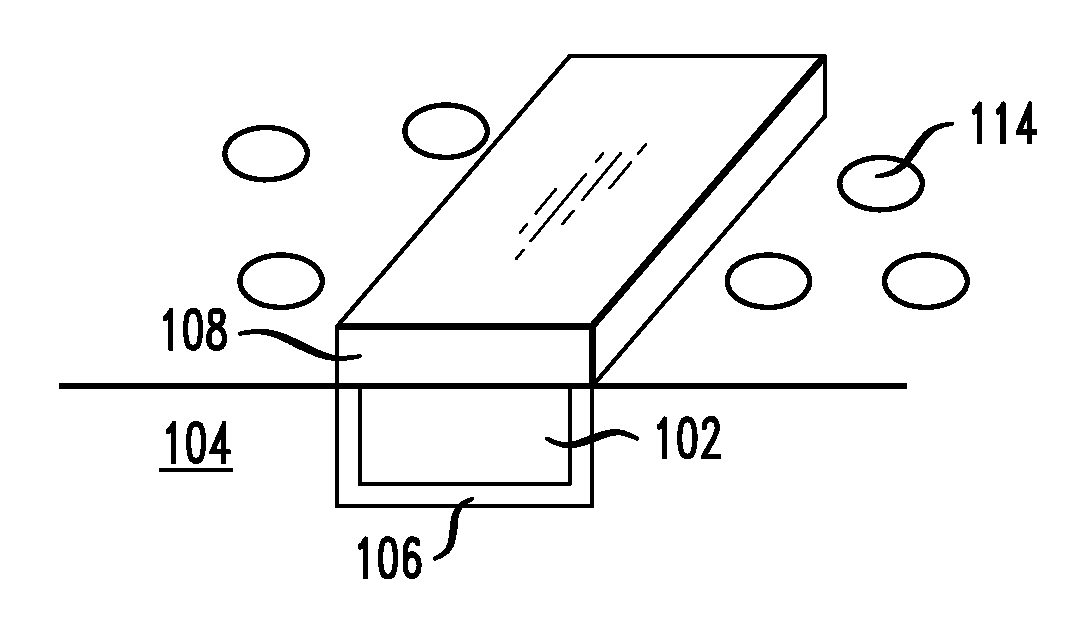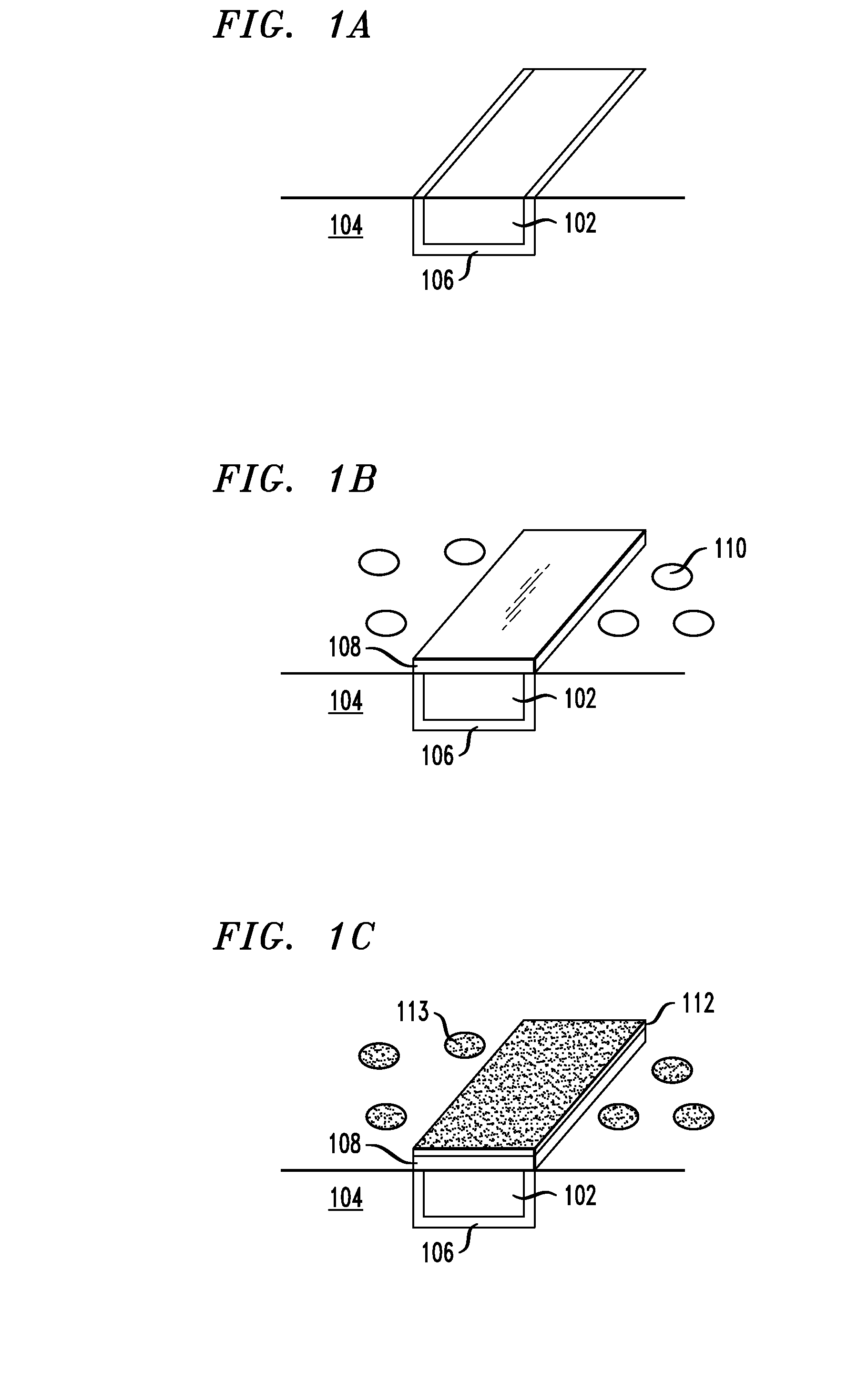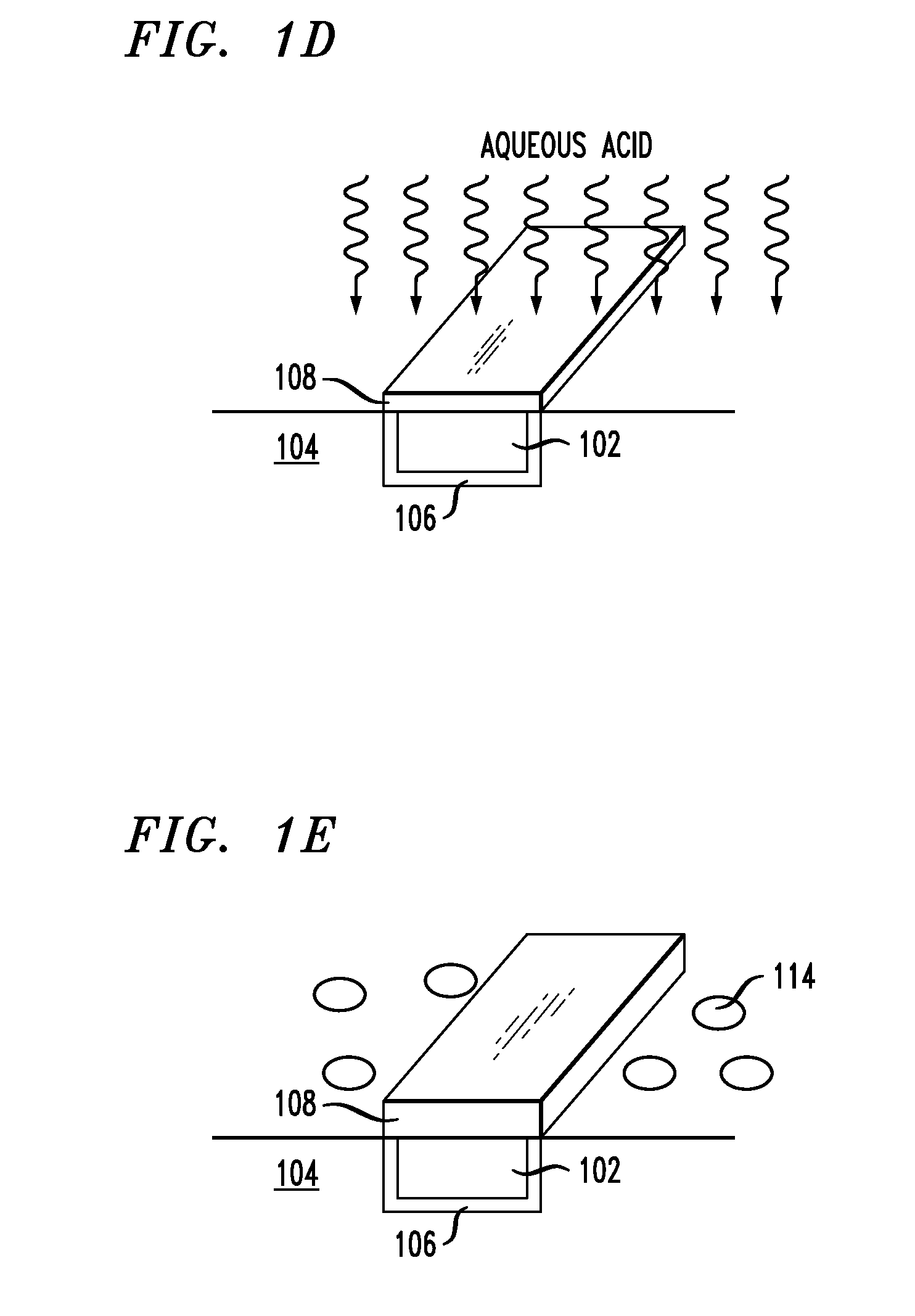Multi-Step Method to Selectively Deposit Ruthenium Layers of Arbitrary Thickness on Copper
a technology of ruthenium capping layer and copper wire, which is applied in the direction of resistive material coating, superimposed coating process, vacuum evaporation coating, etc., can solve the problem that cvd, although limited in selectivity, can only deposition ru on the cu wire, and dielectric can become contaminated with ru
- Summary
- Abstract
- Description
- Claims
- Application Information
AI Technical Summary
Benefits of technology
Problems solved by technology
Method used
Image
Examples
Embodiment Construction
[0009]FIGS. 1A-E are cross-sectional diagrams illustrating an exemplary methodology for forming a ruthenium (Ru) capping layer on a copper (Cu) wire. As shown in FIG. 1A, Cu wire 102 is embedded in dielectric structure 104. Dielectric structure 104 preferably comprises a low-k dielectric, such as a SiCOH low-k dielectric. Diffusion barrier layer 106 is present between Cu wire 102 and dielectric structure 104. According to the present techniques, a Ru capping layer will be formed on the exposed, i.e., top, surface of Cu wire 102. As highlighted above, a capping layer is typically used to protect the wire during subsequent processing. Advantageously, the capping layers described herein (i.e., Ru capping layers over Cu wires) further serve to suppress electromigration of the Cu in the wire.
[0010]As shown in FIG. 1B, Ru layer 108 is formed on Cu wire 102. Specifically, chemical vapor deposition (CVD) of Ru is performed for a duration of which there is preferential selective nucleation o...
PUM
| Property | Measurement | Unit |
|---|---|---|
| thickness | aaaaa | aaaaa |
| thickness | aaaaa | aaaaa |
| temperature | aaaaa | aaaaa |
Abstract
Description
Claims
Application Information
 Login to View More
Login to View More - R&D
- Intellectual Property
- Life Sciences
- Materials
- Tech Scout
- Unparalleled Data Quality
- Higher Quality Content
- 60% Fewer Hallucinations
Browse by: Latest US Patents, China's latest patents, Technical Efficacy Thesaurus, Application Domain, Technology Topic, Popular Technical Reports.
© 2025 PatSnap. All rights reserved.Legal|Privacy policy|Modern Slavery Act Transparency Statement|Sitemap|About US| Contact US: help@patsnap.com



